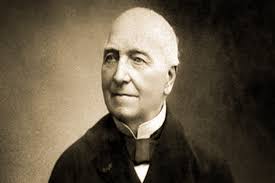Culture
Gidler- An Ancient Symbol with Modern Significance
Published
9 months agoon

Step into the intriguing world of Gidler, an ancient symbol shrouded in mystery and steeped in cultural significance. Join us on a journey to uncover its origins, delve into its rich history, explore its modern uses, and learn how you can incorporate this timeless emblem into your life. Discover the hidden meanings behind Gidler and unlock its potential to add depth and symbolism to your everyday experiences.
History and Origin of Gidler
Step back in time to uncover the mysterious origins of the ancient symbol known as the Gidler. The history of Gidler is shrouded in legends and myths, with its exact beginnings lost to the sands of time. Some believe it dates back thousands of years, originating from a long-forgotten civilization that revered its symbolism.
Throughout history, Gidler has been associated with various meanings and interpretations across different cultures and regions. From representing unity and balance to symbolizing protection and strength. This enigmatic symbol continues to captivate curious minds seeking to unravel its true significance.
As civilizations rose and fell, Gidler endured, transcending generations to retain its timeless allure. Its journey through the annals of history reflects. The enduring power of symbols in shaping our collective consciousness and understanding of the world around us.
Today, as we delve into the past to unearth the secrets of Gidler’s origin, we are reminded that some mysteries are meant to be embraced rather than fully understood.
Cultural Significance
The Gidler symbol holds deep cultural significance across various civilizations throughout history. It has been revered as a powerful emblem representing unity, strength, and protection. In ancient traditions, the Gidler was often used in rituals to ward off evil spirits and bring good fortune.
Across different cultures, the Gidler symbolizes interconnectedness and harmony between individuals and the universe. Its intricate design is believed to channel positive energy and promote balance in one’s life. The cultural importance of the Gidler extends beyond borders, resonating with people from all walks of life.
In many societies, wearing or displaying the Gid-ler is seen as a way to connect with ancestral wisdom and seek guidance from higher realms. The symbol’s timeless appeal lies in its ability to transcend language barriers and speak to the universal human experience of seeking meaning and connection.
As we continue to explore our cultural heritage and spiritual beliefs, the enduring presence of the. Gidler serves as a reminder of our shared humanity and collective journey towards enlightenment.
Modern Uses of Gidler
In today’s fast-paced world, the ancient symbol of Gidler has found new life in modern applications. From trendy fashion accessories to contemporary home decor pieces, Gidler is making a splash in various industries.
In the realm of technology,. Gidler motifs are being incorporated into sleek smartphone cases and stylish laptop skins, adding a touch of mystique and uniqueness to everyday gadgets. This fusion of tradition and innovation is captivating tech-savvy individuals looking for something beyond the ordinary.
Moreover, in the fields of wellness and mindfulness,. Gidlers are being engraved onto meditation tools like crystals and incense holders, infusing spiritual energy into daily practices. The symbol’s intricate design serves as a reminder to stay grounded and connected amidst the chaos of modern life.
As more people seek meaning and authenticity in their belongings,. It’s no wonder that Gidler has become a cherished emblem with enduring relevance in our contemporary world.
How to Incorporate Gidler into Your Life
Embracing the ancient symbol of Gidler in your daily life can bring a sense of connection to history and culture. One simple way to incorporate Gidler is through jewelry—wearing a necklace or bracelet adorned with this meaningful symbol. Another idea is to integrate Gid-ler into your home decor; consider adding artwork or tapestries featuring the symbol for a touch of elegance and symbolism.
For those interested in a more personal connection, meditation or mindfulness practices centered around Gid-ler can provide a deeper understanding of its significance. You could also explore incorporating Gidler into your daily affirmations or mantras, allowing its power to inspire and uplift you throughout the day.
Incorporating Gid-ler into your life doesn’t have to be complicated; even subtle touches, like incorporating it into your fashion choices or using it as a screensaver on your electronic devices, can serve as gentle reminders of its enduring presence.
The Future of Gidler
As we look towards the future of Gidler, it’s exciting to see how this ancient symbol continues to captivate modern audiences. With its rich history and cultural significance, Gid-ler is poised to become even more prevalent in various aspects of our lives.
In the digital age, we can expect to see Gidler being incorporated into new forms of art, design, and fashion. Its timeless appeal makes it a versatile symbol that can adapt to contemporary trends while still carrying its traditional essence.
Furthermore, as people seek deeper connections with their roots and heritage, Gid-ler provides a link to ancient wisdom and symbolism that resonates across generations. Its relevance will only grow as individuals embrace the power of symbols to express identity and values.
Conclusion
Gidler is more than just a symbol; it’s a timeless representation of interconnectedness, balance, and harmony. This ancient emblem has withstood the test of time. Evolving from its historical roots to find new meaning in our modern world. As we continue to embrace Gidler in various aspects of our lives—from art and design to spirituality and personal growth—its significance only grows stronger.
Incorporating Gidler into your life can bring a sense of grounding and connection to something greater than ourselves. Whether you choose to wear it as jewelry,. Integrate it into your home decor, or simply meditate on its intricate patterns, Gid-ler serves as a reminder that we are all part of a larger cosmic tapestry.
As we look towards the future, one thing is certain: Gidl-er will continue to inspire and captivate those who seek deeper meaning in their lives. So why not embrace this ancient symbol with modern significance and see where its journey takes you?
You may like
Culture
Ferdinand Berthier: Pioneer of Deaf Culture and Advocacy
Published
2 months agoon
October 14, 2024
Ferdinand Berthier (1803–1886) is a name that holds immense significance in the history of the deaf community. A French intellectual, educator, and deaf-rights advocate, Berthier’s work laid the foundation for deaf culture, sign language recognition, and the creation of spaces where the deaf community could thrive. His contributions were diverse, spanning teaching, writing, organizing deaf associations, and fostering a sense of pride in deaf identity. Berthier’s legacy continues to inspire both the deaf and hearing communities today.
Early Life and Education
Born into Silence
Ferdinand Berthier was born on September 30, 1803, in Louhans, a small town in the Burgundy region of France. He was born deaf, though the cause of his deafness is unknown. At that time, being born deaf could be a major hindrance to one’s education and social standing. Many deaf people were isolated, lacking access to formal education or methods of communication. However, Berthier’s life took a different path thanks to his family’s determination and the existence of specialized education for deaf children.
Education at the Institut National des Jeunes Sourds
At the age of 8, Berthier’s parents enrolled him in the prestigious Institut National des Jeunes Sourds (National Institute for Deaf-Mutes) in Paris, the world’s first public school for the deaf. The school had been founded by the famed French educator Abbé Charles-Michel de l’Épée in the 18th century. At the institute, Berthier learned French sign language, the primary mode of instruction, and thrived in the rich educational environment. His teachers, including the influential deaf educator Jean Massieu and hearing teacher Roch-Ambroise Bébian, became his mentors, instilling in him a strong sense of pride in his deaf identity.
Career and Contributions
Becoming an Educator
After graduating from the Institut National des Jeunes Sourds, Berthier stayed on at the institution, where he became one of the first deaf teachers in the world. His teaching career began in 1829, and he quickly rose to prominence, advocating for the recognition of sign language as a legitimate and rich mode of communication. Berthier’s contributions were not limited to classroom teaching; he also began to focus on writing about deaf education, deaf culture, and the broader social issues faced by the deaf community.
A Champion of Deaf Rights
Ferdinand Berthier was a tireless advocate for the rights of deaf individuals, and he was particularly dedicated to the recognition and preservation of sign language. In the early 19th century, the use of sign language was under threat as oralism—the belief that deaf people should be taught solely through spoken language—began to gain prominence. Berthier staunchly defended the use of sign language, arguing that it was a natural and expressive form of communication that allowed the deaf community to engage fully in society.
His advocacy efforts were not limited to sign language. Berthier also campaigned for better employment opportunities, social integration, and education for deaf people. He worked closely with educators and philosophers to raise awareness about the capabilities of deaf individuals, challenging societal prejudices and misconceptions.
The Creation of Deaf Associations
In 1834, Berthier co-founded the first organized association for the deaf in France, known as the Société Centrale des Sourds-Muets (Central Society of Deaf-Mutes). This organization was groundbreaking, as it provided a space for deaf individuals to come together, exchange ideas, and advocate for their rights. The society also hosted social events and gatherings, fostering a sense of community and solidarity among its members.
Berthier understood the importance of building networks and creating platforms where deaf people could share their experiences and push for change. Through his leadership, the society became a model for similar organizations in other countries, helping to spark a global movement of deaf advocacy.
Writing and Intellectual Contributions
In addition to his work as an educator and advocate, Berthier was a prolific writer. He authored several important works on deaf education, the history of the deaf community, and the role of sign language in society. His writings were not only influential in shaping the direction of deaf education in France but also contributed to the broader understanding of deaf culture.
Berthier’s most notable work is his biography of Abbé de l’Épée, the founder of deaf education in France, which he wrote in 1840. In this work, Berthier honored de l’Épée’s contributions to the deaf community while also highlighting the need for continued advocacy and support for deaf education.
He also wrote extensively about his own experiences as a deaf person, shedding light on the challenges and triumphs of living in a hearing world. His writings helped to bridge the gap between the deaf and hearing communities, fostering greater understanding and empathy.
Recognition and Honors
Recognition from French Society
Ferdinand Berthier’s contributions to society did not go unnoticed. In 1849, he was awarded the prestigious Legion of Honor (Légion d’Honneur) by the French government, becoming the first deaf person to receive this recognition. This award was a significant achievement, not only for Berthier personally but also for the deaf community as a whole. It was a testament to the value of his work and a step toward greater visibility and acceptance of deaf individuals in mainstream society.
Building Deaf Pride
One of Berthier’s most enduring legacies is his role in fostering a sense of pride in deaf identity. At a time when deaf individuals were often marginalized and viewed as inferior, Berthier worked tirelessly to change these perceptions. He encouraged deaf people to embrace their identity and take pride in their language and culture. Through his teaching, writing, and advocacy, Berthier helped to build a foundation for what would later be recognized as “Deaf Culture,” a term that celebrates the shared experiences, language, and traditions of the deaf community.
Mentoring Future Leaders
As a teacher and leader within the deaf community, Berthier mentored many future deaf leaders and advocates. His influence extended far beyond his own lifetime, as his students went on to play important roles in the development of deaf education and advocacy. Through his example, Berthier inspired generations of deaf individuals to fight for their rights and work toward a more inclusive society.
Legacy
A Lasting Impact on Deaf Culture
Ferdinand Berthier’s legacy is deeply intertwined with the development of modern deaf culture. His efforts to defend and promote sign language, his advocacy for the rights of deaf individuals, and his leadership in creating spaces where the deaf community could come together all contributed to the flourishing of deaf culture in France and beyond.
Today, Berthier is remembered as a pioneer in the fight for deaf rights, and his contributions continue to inspire both deaf and hearing individuals around the world. His work laid the groundwork for future generations of deaf advocates, educators, and scholars, and his vision of a world where deaf people are valued for their abilities and contributions remains as relevant as ever.
The Influence of His Ideas Today
Berthier’s ideas about the importance of sign language and the need for deaf individuals to be active participants in their own education and advocacy continue to influence contemporary discussions about deaf rights. His belief in the power of community, education, and pride in deaf identity has been echoed in the work of modern deaf scholars and activists.
Conclusion
Ferdinand Berthier’s life was dedicated to improving the lives of deaf individuals and advocating for the recognition of sign language and deaf culture. As a teacher, writer, and leader, he challenged societal norms and fought for the rights of the deaf community at a time when their voices were often ignored. His legacy continues to resonate today, reminding us of the importance of inclusion, advocacy, and the celebration of diverse forms of communication. Through his work, Berthier helped to lay the foundation for the vibrant and thriving deaf community we see today, and his influence will be felt for generations to come.
Culture
Book32 Demystified: Everything You Need to Know About This Popular Platform
Published
8 months agoon
April 14, 2024
Are you an aspiring author looking to share your stories with the world? Or perhaps a reader on the hunt for unique and captivating books? Look no further than book32 – the dynamic online platform that has revolutionized the way we discover, publish, and enjoy literature. In this blog post, we will delve into everything you need to know about book32 – from its history and features to success stories and tips for maximizing your presence. Let’s unravel the mysteries of book32 together!
History and Growth of the Platform
book32 has an intriguing history that dates back to its humble beginnings as a platform for aspiring writers to share their stories with the world. Originally founded by a group of passionate book lovers, book32 quickly gained traction among authors seeking a user-friendly and accessible publishing tool.
As the platform evolved, it adapted to meet the changing needs of both writers and readers alike. With a focus on simplicity and innovation, book32 emerged as a go-to destination for self-publishing enthusiasts looking to bypass traditional publishing hurdles.
Over time, word spread about book32’s unique features and benefits, leading to exponential growth in its user base. Authors flocked to the platform for its easy-to-use interface, wide distribution network, and supportive community of fellow writers.
Today, book32 stands as a testament to how technology can empower creatives worldwide. Its evolution reflects the ever-changing landscape of digital publishing and sets the stage for future advancements in online storytelling platforms.
Features and Benefits of book32
Searching for a platform that offers a seamless publishing experience? Look no further than book32. This innovative platform provides authors with a wide range of features and benefits to help bring their work to life.
One of the key advantages of using book32 is its user-friendly interface, making it easy for writers to navigate and upload their content effortlessly. Authors can customize their books with various design options and templates, ensuring that their work stands out in the digital space.
book32 also offers robust marketing tools, allowing authors to promote their books effectively across multiple channels. From social media integration to email campaigns, this platform helps creators reach a broader audience and increase visibility for their work.
Additionally, book32 provides detailed analytics and reporting tools, giving authors valuable insights into reader engagement and sales performance. With real-time data at their fingertips, writers can make informed decisions to optimize their publishing strategy for success.
How to Use book32: A Step-by-Step Guide
Are you ready to dive into the world of book32 and start your publishing journey? Let’s walk through a simple step-by-step guide on how to use this popular platform.
First, create an account on book32 by signing up with your email address or social media accounts. Once registered, you can start exploring the platform and familiarize yourself with its features.
Next, prepare your manuscript in a compatible format such as PDF or Word document. Upload your file onto book32 and customize the layout and design according to your preferences.
After finalizing the formatting, set a price for your eBook or choose to offer it for free. You can also select distribution options and decide where you want your book to be available for purchase.
Promote your eBook by sharing it on social media platforms, engaging with readers through blog posts or author interviews, and utilizing book32’s marketing tools to reach a wider audience.
Monitor your sales and reviews regularly, gather feedback from readers, and continue refining your marketing strategies to maximize visibility and success on book32.
Success Stories from Authors on book32
As an online publishing platform, book32 has been a launching pad for many aspiring authors to share their stories with the world. One such success story is that of Sarah Thompson, a first-time writer who self-published her debut novel on book32 and saw it become a bestseller within weeks.
Another author, John Michaels, used book32’s user-friendly interface to reach a global audience with his series of mystery novels. His books gained traction through word-of-mouth recommendations and positive reviews from readers across different countries.
book32 also provided a platform for established authors like Emily Roberts to experiment with new genres and connect with readers in ways traditional publishing couldn’t offer. Through targeted marketing tools on the site, she was able to engage her existing fan base while attracting new followers.
These success stories highlight the diverse opportunities book32 provides for writers at various stages of their careers.
Common Misconceptions about Book 32
One common misconception about Book 32 is that it’s only for established authors. In reality, this platform welcomes writers of all levels, from beginners to experienced professionals. Whether you’re a first-time author or a seasoned writer looking for a new publishing avenue, book32 offers opportunities for everyone.
Another misunderstanding is that self-publishing on book32 means compromising on quality. However, the platform provides tools and resources to help authors create high-quality books that rival those released by traditional publishers. From editing services to cover design options, book32 ensures that your work meets professional standards.
Some may believe that success in Book 32 is based solely on luck or chance. While visibility plays a role in gaining readership, strategic marketing and engagement with your audience are key factors in building a loyal following. By actively promoting your work and interacting with readers, you can increase your chances of success on the platform.
It’s important to debunk these misconceptions surrounding book32 so that aspiring authors feel encouraged to explore the possibilities this platform offers without being deterred by false assumptions.
Comparison with Other Online Publishing Platforms
When it comes to online publishing platforms, book32 stands out among the competition for its user-friendly interface and extensive reach. Unlike some other platforms that may have limitations on distribution or charge high fees, book32 offers authors a seamless experience with global distribution options at no cost.
In comparison to traditional publishing houses, book32 provides authors with full control over their work from start to finish. Authors can easily upload their manuscripts, design covers, set prices, and track sales all in one place without the need for a literary agent or publisher intermediary.
While some platforms may prioritize established authors or genres, book32 welcomes all writers regardless of experience level or genre preference. This inclusivity allows for a diverse range of voices and stories to be shared with readers worldwide.
When weighing the pros and cons of different online publishing platforms, many authors find that book32 offers the perfect balance of accessibility, support, and freedom to bring their literary dreams to life.
Tips for Maximizing Your Presence in Book 32
To maximize your presence on book32, start by optimizing your author profile. Add a professional photo and a compelling bio that showcases your expertise and interests. Engage with readers by responding to comments and messages promptly.
Utilize book32’s marketing tools like promotions, discounts, and giveaways to attract more readers to your books. Collaborate with other authors through cross-promotions or joint events to expand your reach within the book32 community.
Regularly update your book listings with fresh content, reviews, and keywords to improve visibility in search results. Consider offering exclusive content or bonus material to incentivize readers to purchase your books.
Engage in discussions on book32 forums or groups related to your genre to connect with like-minded readers and potential fans. Network with influencers or bloggers who can help promote your work on their platforms.
Track analytics and sales data on book32 to identify trends and adjust your marketing strategies accordingly. Stay active on the platform by sharing updates about upcoming releases, events, or behind-the-scenes insights into your writing process.
Criticisms and Controversies Surrounding book
Criticisms and controversies have inevitably surrounded book, as with any popular platform. One common critique is the issue of content quality control. Some users feel that there is a lack of oversight when it comes to the publication of books on the platform, leading to concerns about the credibility and reliability of the information available.
Another point of contention revolves around royalties and pricing. Authors often debate whether the payment structure on book32 is fair and transparent, with some feeling that they are not adequately compensated for their work. This has sparked debates within the writing community about equitable compensation for digital publications.
Additionally, there have been discussions regarding copyright infringement on Book 32. Some authors claim that their work has been plagiarized or distributed without permission, raising questions about intellectual property protection on the platform. These issues highlight ongoing challenges in navigating the digital publishing landscape.
Despite these criticisms, many authors continue to find success and reach a wide audience through book32’s expansive reach and user-friendly interface. It remains important for both authors and readers to stay informed about these debates while utilizing the platform effectively for their literary endeavors.
Future of book32
The future of book32 looks promising as the platform continues to innovate and adapt to the changing landscape of online publishing. With a strong focus on user experience and author support, book is poised to attract even more writers looking to share their work with a global audience.
As technology evolves, we can expect book32 to incorporate new features like interactive storytelling tools, enhanced analytics for authors, and improved marketing resources. These advancements will empower authors to engage with readers in innovative ways and drive more visibility for their books.
Furthermore, partnerships with traditional publishers and expanded distribution channels could open up new opportunities for authors on book32. By staying ahead of industry trends and listening to the needs of both writers and readers, book32 is well-positioned for continued growth in the digital publishing space.
Conclusion
As we wrap up our exploration of book32, it’s clear that this platform offers a wealth of opportunities for authors looking to share their work with the world. From its user-friendly interface to its wide reach and diverse community, book32 provides a supportive environment for both new and experienced writers alike.
By delving into the history, features, and success stories of book, we’ve gained valuable insights into how this platform has evolved over time and impacted the lives of countless authors. The comparisons made with other online publishing platforms have highlighted some unique advantages that set Book32 apart in the industry.
While there may be criticisms and controversies surrounding Book 32, it’s important to acknowledge that no platform is without its challenges. As technology advances and reader preferences shift, it will be interesting to see how book32 continues to adapt and innovate in response to these changes.
FAQs
1. What sets book32 apart from other online publishing platforms?
book32 stands out for its user-friendly interface, extensive marketing tools, and global reach, making it a top choice for authors looking to showcase their work to a wide audience.
2. Can I publish my book on book32 if I am not an established author?
Absolutely! One of the great things about Book 32 is that it welcomes new and aspiring authors, providing them with the opportunity to share their stories with readers around the world.
3. How can I maximize my visibility on Book32?
To increase your presence on book32, make sure to optimize your author profile, engage with readers through comments and reviews, utilize promotional tools offered by the platform, and actively promote your books on social media channels.
4. Is there a cost associated with using book32?
While signing up and publishing your books on book32 is free of charge. The platform does take a percentage of royalties from sales as part of its revenue-sharing model.
5. What does the future hold for book32?
As technology continues to advance and digital platforms evolve. We can expect book to adapt and grow alongside these changes, offering even more opportunities for authors to connect with readers worldwide in innovative ways.

Tick, tock, goes the clock as time marches on, shaping the world in ways we could never have imagined. From the quaint streets of 1954 to the bustling metropolises of 2023-1954, the contrast is stark yet captivating. Join us on a journey through time as we compare these two distinct eras and unravel the mysteries of societal evolution.
Technological advancements: 1954 vs 2023
In 1954, technological advancements were characterized by the rise of television sets in households and the development of early computers that filled entire rooms. The concept of smartphones was unfathomable, and communication relied heavily on landline phones and written letters.
Fast forward to 2023, where technology has revolutionized every aspect of our lives. Smartphones have become an extension of ourselves, offering instant access to information, communication with anyone globally, and endless entertainment options at our fingertips. Artificial intelligence is no longer just a concept but a reality, shaping industries from healthcare to transportation.
The evolution from bulky machinery to sleek devices that fit in the palm of our hands is a testament to human innovation and progress. As we reflect on these changes over decades, it’s awe-inspiring to imagine what further advancements the future holds for us.
Social and cultural changes: 1954–2023
The social and cultural landscape has undergone significant transformations from 1954-2023. In the mid-20th century, societal norms were more traditional and conservative. Gender roles were rigidly defined, with women expected to primarily fulfill domestic duties while men dominated the workforce. Fast forward to today, and we see a much more inclusive society where gender equality is championed.
In terms of diversity, multiculturalism was not as celebrated in 1954 as it is now. Today’s society embraces different cultures, religions, and backgrounds with open arms, promoting tolerance and understanding among people from all walks of life.
Furthermore, technological advancements have revolutionized how we communicate and interact with one another. The rise of social media has connected individuals globally like never before, shaping new forms of community and expression that would have been unimaginable in 1954.
The social and cultural changes between these two eras highlight a shift towards progressiveness and inclusivity that continues to evolve as we move further into the future.
Economic factors: 1954 vs 2023
In 1954, the economic landscape was vastly different from what we see in 2023. Industries were booming post-World War II, with manufacturing dominating the scene. The emphasis was on production efficiency and mass consumption.
Fast forward to 2023, and we will witness a shift towards technology-driven economies. Innovation and digitalization have become key drivers of growth, shaping new industries like fintech, biotech, and renewable energy.
Globalization has opened up markets like never before in 2023; businesses can now reach customers worldwide with ease. However, this interconnectedness also brings challenges such as increased competition and the need for adaptability.
Income inequality remains a pressing issue, both in 1954 and 2023 but is approached differently today, with a focus on inclusive growth strategies.
The evolution of economic factors over time highlights the importance of adapting to change and embracing innovation for sustainable growth in a dynamic global economy.
Political landscape: 1954-2023
The political landscape of 1954 was characterized by post-World War II tensions between superpowers, leading to the Cold War. Ideological differences fuel conflicts and proxy wars across the globe. The United States and the Soviet Union engaged in a power struggle that shaped global politics for decades.
Fast forward to 2023, where globalization and technological advancements have transformed how nations interact on a political level. Issues like climate change, cybersecurity, and human rights now dominate discussions among world leaders. International cooperation is essential in addressing these complex challenges that transcend borders.
In 1954, decolonization movements were gaining momentum as colonies sought independence from European powers. Today, calls for equality and social justice resonate globally, highlighting the importance of inclusive governance structures.
Political discourse has evolved significantly over time, reflecting changing values and priorities in society. As we navigate the complexities of modern geopolitics, it’s crucial to learn from history while adapting to new realities shaping our collective future.
Environmental concerns: 1954 vs 2023
In 1954, environmental concerns were not at the forefront of societal discussions. Pollution was seen as a necessary byproduct of progress, with little regard for its long-term effects on the planet.
Fast forward to 2023, and the narrative has shifted dramatically. Climate change is now acknowledged as a pressing issue that requires immediate action. From rising sea levels to extreme weather events, the impact of human activity on the environment is undeniable.
Initiatives like renewable energy sources and sustainable practices have gained traction in recent years, signaling a growing awareness of our collective responsibility to protect and preserve our planet for future generations.
Despite these advancements, challenges still persist. Deforestation, plastic pollution, and carbon emissions continue to threaten ecosystems worldwide. It’s clear that ongoing efforts are needed to address these environmental concerns effectively and ensure a more sustainable future for all.
Lessons learned from the past and preparing for the future
As we reflect on the stark differences between 1954 and 2023, there are invaluable lessons to be gleaned from our past. History serves as a guiding light, showcasing the evolution of society through various lenses. It reminds us of the importance of adaptability and resilience in times of change.
Looking back at the advancements made over the decades, it becomes evident that innovation is key to progress. Embracing new technologies while preserving core values can pave the way for a brighter future. The social fabric has shifted significantly, emphasizing inclusivity and diversity as driving forces for unity.
Economic landscapes have transformed drastically, highlighting the need for sustainable practices and an equitable distribution of resources. Political dynamics have evolved, underscoring the significance of transparency and accountability in governance. Environmental concerns demand urgent attention, urging us to prioritize conservation efforts for generations to come.
As we navigate through these reflections, let us harness the wisdom gained from our past to shape a more promising tomorrow.
Conclusion
In a world where time constantly moves forward, reflecting on the past allows us to appreciate how far we have come. The comparison between 1954 and 2023 reveals remarkable advancements in technology,. Significant social and cultural changes, evolving economic landscapes, shifting political dynamics, and heightened environmental awareness.
As we look back at the lessons learned from the past, it becomes evident that embracing change is essential for progress. By understanding where we have been, we can better prepare for the future challenges and opportunities that lie ahead. Let us continue to learn from history as we navigate towards a more sustainable and inclusive future for generations to come.


Exploring the World of Zoos: Their Role, History, and Ethical Considerations

Sunflowers: The Radiant Wonders of the Natural World

The Role and Evolution of Pharmacies in Modern Healthcare

How Water Contamination Incidents Can Lead to Widespread Health Crises

Unlocking the Potential of Potassium Humate Fertilizer: Finding the Right Supplier

Reflecting on the Past: A Comparison of 2023-1954
Trending
-

 Health8 months ago
Health8 months agoHow Water Contamination Incidents Can Lead to Widespread Health Crises
-

 Business8 months ago
Business8 months agoUnlocking the Potential of Potassium Humate Fertilizer: Finding the Right Supplier
-

 Culture9 months ago
Culture9 months agoReflecting on the Past: A Comparison of 2023-1954
-

 entertainment9 months ago
entertainment9 months agoJudith Ivey – An Actress with Depth and Versatility
-

 entertainment9 months ago
entertainment9 months agoMadeline Wise: A Breakout Talent in Hollywood
-

 entertainment9 months ago
entertainment9 months agoThe Enchantment of Niles Garden Circus: An Insider’s Perspective
-

 Tech9 months ago
Tech9 months agoDizipal 608: A Comprehensive Guide to the Professional Document Scanner
-

 News10 months ago
News10 months agoCarla Diab: Navigating Legal Waters with Legacy, Luxury, and Legal Practice Ownership






